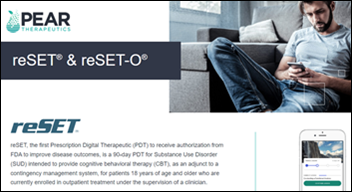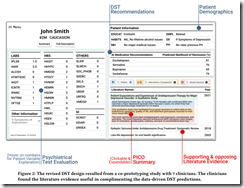These are the HIStalk sponsors that provided responses. Send me yours if you missed out. Click a logo for general company information.
Availity

Booth 8336
Contact: Matt Schlossberg, director, public relations
matt.schlossberg@availity.com
630.935.9136
Availity will highlight how its Upcycled Data addresses the critical issues affecting healthcare data interoperability at HIMSS23. Members of the Clinical Solutions team will be on hand to discuss Availity’s clinical data gateway capabilities and strategy, work to create an advanced data interoperability exchange platform and advocate for national standards, and efforts to establish a single connection point for payer-to-payer transactions. Availity’s team will also participate in the following sessions:
- Implementing Da Vinci Standards for Prior Authorization: A Story Untold
Wednesday, April 19 | 11:45 AM – 12:05 PM CT | Da Vinci Project Kiosk at the Interoperability Showcase
Susan Bellile, Availity, Amy Mattingly, Humana, and Michael Palantoni, Athenahealth
- How HL7 FHIR is Transforming Healthcare: AI, Analytics
Tuesday, April 18 | 5:10 – 5:45 PM CT | HL7 Booth Theatre #138
Sam Schiffman, Availity, and Vivian Neilley, Google
- Developing Scalable Infrastructure for Clinical Data Interoperability and Patient Access
Wednesday, April 19 | 1:00 – 2:00 PM CT | South Building, Level 5, S504
Ashley Basile, PhD, Availity, and Rob Low, Health Care Service Corporation (HCSC)
To learn more about Availity and our participation at HIMSS23, please visit www.availity.com and schedule a meeting with our team!
Baker Tilly

Booth 452
Contact: Charlie Cook, principal, healthcare consulting
charlie.cook@bakertilly.com
772.919.1555
Baker Tilly is excited to exhibit at HIMSS23! Join us at our booth, #452 (near Epic), on Tuesday and Wednesday from 1 – 2 p.m. for a discussion on alleviating staffing shortages in hospitals with technology. Baker Tilly’s Ed Ricks, MHA, CHCIO will be joined by Artisight’s president, Stephanie Lahr, MC, CHCIO for a live discussion. Can’t make that time work? Connect with us anytime at the booth and stop by for some fun putt putt on our green!
Baker Tilly is a leading advisory CPA firm, providing healthcare clients with a genuine coast-to-coast and global advantage in major regions of the US and in many of the world’s leading financial centers – New York, London, San Francisco, Los Angeles, and Chicago. We guide healthcare clients in the provider, payer, and life sciences sectors through complex financial and operational challenges, including system selection, implementation and optimization. Connect with us to discuss where you want to go.
Best Buy Health

Booth 7506
Contact: Patrick Muse, senior director of client engagement
patrick.muse@bestbuy.com
603.506.9982
Best Buy isn’t just the place where you buy big-screen TVs and computers. We also provide technology that might one day help take care of you or a loved one at home. Our Best Buy Health business enables care at home for everyone by focusing on three key areas: wellness at home, aging at home, and care at home. Building its strategy on the strengths of Best Buy, Best Buy Health utilizes its Lively brand to offer a suite of devices, health and safety services, and Caring Centers to help adults age independently. Best Buy Health also connects patients and providers through its Current Health platform to improve the care-at-home experience and ensure better outcomes. Stop by our big blue and yellow booth to learn more and get the chance to win an Apple Watch.
Censinet

Booth – Cybersecurity Command Center 4309-39
Contact: Ed Gaudet, founder and CEO
egaudet@censinet.com
855.866.6001
Censinet will be demonstrating Censinet RiskOps, healthcare’s choice for enterprise cyber and third-party risk management. Censinet and KLAS Research executives will also be recognizing leading digital health IT vendors with the KLAS Research / Censinet “Cybersecurity Transparent” award throughout HIMSS. Censinet CISO and Healthcare Industry Veteran Chris Logan will deliver “Insights from the Healthcare Cybersecurity Benchmarking Study” on Thursday, April 20 at 10:45 a.m. – 11:05 a.m. CT, in South Building, Level 2 | Hall A | Booth 4309-4333 | Cybersecurity Command Center – Theater B. Learn key insights from the industry’s first Healthcare Cybersecurity Benchmarking Study, co-led by Censinet, KLAS Research, and AHA, and sponsored by leading health systems.
Stop by the Censinet booth and pick up a Censinet VIVE2023-coveted solar wireless charger and experience the power of Censinet RiskOps and scan to win a VR Headset.
Clearsense

Booth 7527
Contact: Leann Williams, marketing manager
lwilliams@clearsense.com
904.334.7500
Clearsense is ready to show you our brand-new 1Clearsense data management and delivery platform, along with a full suite of applications. Our team will be available for live demos at booth #7527, and you can get an exclusive Lunch and Learn on Data Literacy with our resident data governance expert, Terri Mikol. Be sure to follow us on social for promos and giveaways and check out our website for a full agenda.
Clearwater

Booth 7320, Cybersecurity Command Center Booth 4309-40
Contact: John Howlett, SVP and chief marketing officer
john.howlett@clearwatercompliance.com
773.636.6449
Clearwater helps organizations across the healthcare ecosystem move to a more secure, compliant, and resilient state so they can successfully accomplish their missions. We do this by providing a deep pool of experts across a broad range of cybersecurity, privacy, and compliance domains, purpose-built software that enables efficient identification and management of cybersecurity and compliance risks, and a tech-enabled, 24x7x365 Security Operations Center with managed threat detection and response capabilities. Join us on Tuesday, April 18, at 12:15 p.m. in the Cybersecurity Command Center as Clearwater CEO Steve Cagle and Renown Health CISO Steven Ramirez discuss how Renown has gone about implementing a cyber risk management program and what the organization has learned along the way.
CloudWave

Booth 3417
Contact: Christine Mellyn
cmellyn@gocloudwave.com
781.636.8169
CloudWave, the expert in healthcare data security, provides cloud, cybersecurity, and managed services using a multi-cloud approach. CloudWave is 100% focused on healthcare and delivers enterprise cloud services to nearly 300 hospitals and healthcare organizations, supporting 140+ EHR, clinical, and enterprise applications.
Drop by the CloudWave booth for an interactive, informative experience. Visit us at Booth 3417 to hear CloudWave experts talk about important technology topics ranging from cybersecurity to cloud, and earn a chance to win a pair of Apple AirPod Pros at the end of each presentation! Managing the Edge – New Ways of Looking at Your Data Center Infrastructure – Tues. 4/18 @1pm, Wed. 4/19 @1pm Hear How ArchCare Health Services Tested Their Cybersecurity Response Readiness – Tues. 4/18 @3pm, Wed. 4/19 @3pm Take Healthcare IT Security to the Next Level – Go Beyond the Status Quo – Wed 4/19 @11am What Scares Attackers the Most and How They Are Using ChatGPT – Thurs. 4/20 @11am How to Build Your Secure Cloud Offering – A Guide for ISVs – Thurs. 4/20 @1pm.
For more information about CloudWave at HIMSS, or to add any of these presentations to your calendar, visit www.gocloudwave.com/himss23/.
Consensus Cloud Solutions

Booth 1876
Contact: Christine Duval, director of content and communications strategy
christine.duval@consensus.com
781.519.8539
Stop by our booth at HIMSS to learn how we’re building a more connected future in healthcare at the highest levels of privacy and security. Helping organizations access meaningful patient data to get the most comprehensive information and make the most informed decisions. We’re also giving away a Nintendo Switch every day! Without the proper interoperability solutions in healthcare, you may feel like you’re playing a game of Drawful! You’re limited in the ways you can communicate, there is a lack of time, a lack of continuity, and your message may not be received the way you intended. Stop by the booth to see if you can beat our communication-exchange experts at a game of Drawful. All Drawful players will be entered in our daily raffle to win the best-selling game console, Nintendo Switch.
Dimensional Insight

Booth 2809
Contact: Lindsay Goldfarb, Director of Healthcare Marketing
LGoldfarb@dimins.com
781.419.2190
Dimensional Insight, an award-winning enterprise analytics provider, is excited to showcase its new approach to self-service analytics at HIMSS23 in booth #2809. The new improvements to Diver Platform focus on empowering users to take ownership of their analytics, resulting in increased usage and faster time to insight. Stop by our booth to see how Dimensional Insight can help you optimize patient care, support staff productivity, and improve financial KPIs.
Schedule a meeting with Dimensional Insight on the HIMSS23 show floor and get a sneak preview of these latest advancements.
Ellkay

Booth 213
Learn how ELLKAY can declutter your data strategy while streamlining interoperability efficiencies and building a patient-centric digital ecosystem. Visit booth #213 to discuss how ELLKAY’s newest solution can do just that… delivering a speedier, scalable solution to improve your ROI. Everyone knows ELLKAY is the place to be, so join the ELLKAY booth buzz during HIMSS 2023:
Tuesday, April 18
- Coffee Hour at Booth #213 | 10:00 a.m. – 1:00 p.m.
- Women in HIT Happy Hour at Booth #213 | 4:00 p.m. – 6:00 p.m.
- Champagne at Sunset | Level 33 at Marriott Marquis Chicago | 6:30 p.m. – 8:30 p.m. RSVP today.
Wednesday, April 19
- International Coffee/Tea Hour at Booth | 9:30 a.m. – 12:30 p.m.
- Interoperability Happy Hour at Booth | 4:00 p.m. – 6:00 p.m.
Thursday, April 20
- Coffee Hour at Booth | 9:30 a.m. – 12:30 p.m.
Elsevier

Booth 1236
Contact: Mary Ann Abbruzzo-White, SVP of clinical solutions global marketing
m.abbruzzo-white@elsevier.com
215.275.9091
Elsevier is committed to supporting clinicians, health leaders, educators, and students to overcome the challenges they face every day. We support healthcare professionals throughout their career journey from education to clinical practice and believe providing current, credible, accessible, evidence–based information can help empower clinicians to provide the best healthcare possible. Stop by our booth to learn how to advance your EHR with knowledge and celebrate the launch of the reimagined ClinicalKey; our clinical decision support tool that delivers quick, credible answers at the point-of-care alongside trusted, comprehensive medical evidence to support practitioners’ clinical information needs.
Healthjump

Booth 7006
Contact: Mary Kay Bergan, senior sales manager
mbergan@healthjump.com
Healthjump allows you to get standardized EHR data across practices without the limitations and complex set-up of traditional interface engines. If we’re lucky, we’ll see you in Chicago this April for HIMSS23! You can find us at Booth #7006. We record in-person interviews with some of the most influential thought leaders in the industry! The series is called “Leaders in Leveraging Health Data.” If you are interested in joining the video series and becoming a leader, feel free to reach out.
KeyCare

Booth 3482
Contact: Sarah Inman, VP of health system partnerships
sarah@keycare.org
404.851.4678
KeyCare is an Epic-based virtual care platform designed to help forward-thinking health systems improve access and quality by expanding their virtual care options for patients. KeyCare offers health systems access to a network of independent virtual care providers working on KeyCare’s Epic-based platform. Health systems can start with nationwide virtual urgent care coverage, and then may add other virtual health services based on their virtual care initiatives. To learn more about KeyCare, visit www.keycare.org.
Kyruus

Booth 3663
Contact: Ashley Nyland, director of growth marketing
anyland@kyruus.com
617.419.2060
Join our team for the Kyruus Block Party at Booth #3663 on Wednesday, April 19! [during exhibit hall social] Kyruus is the leader in provider data management and provider search and scheduling for healthcare organizations, dedicated to a vision to make healthcare work better for everyone by connecting people to the care they need. Physician-founded and led, we saw that a systemic misalignment of supply and demand was causing people to wait too long for care and too often end up with the wrong providers. Inspired by baseball’s Moneyball concept, Kyruus delivers a better, data-driven approach to patient-provider matching and scheduling. Today, Kyruus powers the patient access initiatives of top healthcare organizations across the US, transforming how people find and book care through our multi-channel platform.
Looking to transform care navigation even more, Kyruus has acquired Healthsparq and Epion Health. With the addition of Healthsparq, a leader in healthcare guidance and transparency, the combined company is enabling unprecedented payer-provider connectivity to make it easier for people to navigate and schedule care across access channels. Epion Health is a leader in digital patient engagement solutions, and the collaboration offers healthcare organizations and providers a one-stop shop for patient access and engagement solutions.
MEDHOST

Contact inquiries@medhost.com or schedule a meeting with a representative at the conference to learn more.
MEDHOST, a leading EHR and healthcare IT solutions provider, will be at HIMSS23 in Chicago from April 17-21 for you to learn about their integrated EHR and their products and services that improve hospital operations and clinical care workflows. This includes a physician-focused mobile app, integrated anesthesia documentation, and a robust analytics solution. Additionally, MEDHOST offers a Rural Emergency Hospital solution packaging leading emergency department technology with IT, security, and application experts. Learn about MEDHOST’s MEDTEAM Services, outsourced services driven by a core mission to enhance how providers approach revenue cycle management, security, managed IT, and integration.
MEDITECH

Booth 2848
Contact: Anthony Filleti, marketing supervisor
afilleti@meditech.com
781.821.3000
MEDITECH empowers healthcare organizations everywhere to expand their vision of what’s possible with Expanse, the world’s most intuitive and interoperable EHR. Join MEDITECH in booth #2848 to see how MEDITECH Expanse can elevate the healthcare experience, and get a first-hand look at the platform’s cloud-based design – a solid foundation for safer, more sustainable care both today and in the future. MEDITECH executives, clinician experts, and team will be there to share customer successes, and demonstrate the company’s latest innovations, including mobile apps for physicians and nurses, the Traverse interoperability solution, Expanse Patient Connect secure texting, and more. Learn how Expanse helps drive better outcomes and provides mobile, personalized solutions to improve efficiency for an overburdened workforce.
On Tuesday and Wednesday, visitors can attend scheduled in-booth demonstrations on MEDITECH’s latest solutions, including Expanse Now, Genomics, Care Compass, Population Insight, and the embedding of Google Health’s search and summarization capabilities into clinician workflow. On Thursday at 10:00 a.m. visitors can learn more about MEDITECH’s Greenfield Workspace and MEDITECH Alliance programs. At the Interoperability Showcase MEDITECH will be featured in three use case scenarios; Record Locator Service: Powering Data Access in the Continuum of Care (CommonWell Health Alliance), 360X and Multimodality Technology to Support Care Transitions, and Leveraging Carequality and 360X transitions. MEDITECH customers will be presenting at several sessions throughout the conference, including HCA Healthcare, Avera Health, Frederick Health, and Lawrence General Hospital, covering topics such as data governance, usability, interoperability, precision medicine, and physician efficiency and optimization.
Nuance Communications

Booth 912
Contact: Caitlyn Keating, senior communications manager
Caitlyn.Keating@nuance.com
781.565.8926
Nuance, the global leader in conversational AI, will showcase the first-ever automated documentation workflow solution, DAX Express – powered by ChatGPT-4 — in an interactive, experiential demo at HIMSS23. Nuance will also preview an additional set of advanced generative AI-enabled capabilities that deliver more automation and intelligence-infused experiences across the patient journey. These future workflow-integrated capabilities – built on proven AI solutions that have consistently delivered value and outcomes for physicians, nurses, radiologists, and patients for decades – further automate complex workflows and mundane tasks, surface key details, and identify missing information to support patient care. Visit Nuance’s Booth #912 at HIMSS to learn more about how Nuance is ushering in the new era of intelligent healthcare experiences.
Philips Capsule

Booth 901, Cybersecurity Command Center 4309-03, Interoperability Showcase 7946-52
Philips is a health technology company focused on improving people’s lives through meaningful innovation across the health continuum – from healthy living and prevention to diagnosis, treatment, and home care. The company is a leader in diagnostic imaging, image-guided therapy, patient monitoring and health informatics, as well as in consumer health and home care. Applying advanced technologies and deep clinical and consumer insights, Philips partners with customers to deliver integrated solutions that address the Quadruple Aim: improved patient experience, better health outcomes, improved staff experience, and lower cost of care.
Attend our HIMSS speaking sessions:
- Executive summit: “A Cry for Help – Relieving Patient Care Pressure Through Innovation.” Monday, April 17 at 1:15 p.m. – 1:50 p.m., Marriott Marquis Chicago, Level 4, Grand Horizon Ballroom. Moderator: Nick Patel, founder and chief executive officer, Stealth Consulting .Speakers: Becky Fox, chief clinical Information officer, Intermountain Healthcare; Roy Jakobs, chief executive officer, Royal Phillips; Stephanie Lahr, president, Artisight.
- Industry solution session: “How can automation and predictive insights help improve patient care at lower cost?” Speakers: Gretchen Brown, MSN, RN, chief nursing informatics officer, Stanford Health Care; Adam Alkhato, administrative director of biomedical engineering and technology, Stanford Health Care; Mike Seagraves, PhD, digital transformation partner, Philips. Wednesday April 19, 2023, 2:30 – 3:30 p.m., South Building S402, Room 2.
- Cybersecurity presentation: “Get secure, stay secure.” Speaker: Dirk de Wit, head of product security, Philips. Tuesday, April 18, 2023, 12:15 -12:35 p.m., South hall Theatre A.
ReMedi Health Solutions

We won’t have a booth, but many of our leadership team will be in attendance. Contact GP at g.hyare@remedihs.com to get in touch with ReMedi.
ReMedi Health Solutions is a nationally recognized, physician-led healthcare IT consulting firm specializing in peer-to-peer, physician-centric EHR implementation and training. Our core service lines include System Selection Advisory, System Optimization, Personalization & Physician Efficiency Sessions, Integration and Testing, Go-Live support, and Clinical Chart Abstraction. From the outside looking in, ReMedi Physician Informaticists inform clinicians how to better use the EHR. On the inside, however, we are passionate “Clinician Whisperers” that believe understanding the “why” behind each EHR decision is as important as the “what” or “how”. We listen to physicians, nurses, and healthcare leaders in order to understand their biggest challenges, and we leverage our decades of experience to develop efficient solutions that greatly impact the delivery of care. We will be at HIMSS connecting and sharing our learnings with health IT leaders, friends, and meeting new ones.
Rhapsody

Booth 7110
Contact: Michelle Blackmer, chief marketing officer
Michelle.blackmer@rhapsody.health
312.520.1873
Rhapsody is eager to meet and discuss your greatest challenges when it comes to data integration and data enrichment across your organization’s healthcare ecosystem. We’ll have a robust team of subject matter experts on-hand to speak to all things interoperability, including how Rhapsody health solutions can help your organization accelerate healthier outcomes with healthier data! Visit our booth #7110 or schedule a meeting with us.
Sphere, Powered by TrustCommerce

Booth 3757
Contact: Ryne Natzke, chief revenue officer
rynen@spherecommerce.com
657.383.7967
Visit Sphere at Booth #3757! Sphere’s TrustCommerce platform provides a comprehensive payment platform that has earned the trust of the country’s largest healthcare organizations for their patient payments. Here are three reasons to make a visit:
- Integrate payments directly into your patient and staff workflows with TrustCommerce.
- Experience secure and compliant payment processing, anytime and anywhere, with pre-built integrations to leading EHRs like Epic, Veradigm, and athenaIDX and an extensible API platform that can be built into existing workflows,
- Bring transparency to the patient financial experience and boost payment yield with Sphere’s Health iPASS platform.
Meet our talented team, win exciting prizes, catch a demo, and join the fun at booth #3757.
Surescripts

Booth 1851
Contact: Kate Giaquinto, corporate communications manager
kate.giaquinto@surescripts.com
603.548.5273
Pop by Surescripts booth #1851 during the day or visit us between 4:30 and 6 p.m. on Tuesday, April 18 for a bite to eat and a bit to drink. We’ll toast all that we’ve accomplished in the past year and make plans for the future.
Whenever you stop by, we look forward to talking with you about how we can help your organization fulfill its goals related to simplifying access to patient information across health systems, pharmacies, and payers, receiving critical clinical and medication intelligence in existing workflows—when and where it’s needed most and making decisions that improve outcomes while lowering costs.
Join Surescripts for two speaking sessions at the Interoperability Showcase Spotlight Theater: Tuesday, April 18 at 11:15 a.m.: Interoperability At Scale: Volume, Value Beyond Prescribing Wednesday, April 19 at 9:45 a.m.: The “What’s Next” In Interoperability is Happening Now. Breakfast Briefing with Frank Harvey, CEO, Surescripts Network Alliance partners and industry leaders: Opportunities for Evolving Care Teams to Expand Access & Fill Gaps in Primary Care on Tuesday, April 18, 7-8 a.m. at the Marriott Marquis, Level 2, Shedd A & B.
Tegria

Booth 1481
Contact: Kevin Kutz, VP of external relations
kevin.kutz@tegria.com
608.621.5296
Tegria provides consulting and technology services to help healthcare organizations maximize technology, transform operations, improve financials, and optimize care. To learn more, visit www.tegria.com.
Visage Imaging

Booth 4308
Contact: Brad Levin, general manager, North America, and global head of marketing
blevin@visageimaging.com
540.454.9670
Visage is trailblazing Imaging’s SaaS move to the cloud with an Open Cloud philosophy based on industry standards and multi-cloud support, delivering ultrafast sub-second image display based on object-based cloud storage, while propelling cloud adoption at a fraction of the storage cost of on-premise solutions. Experience Visage 7 CloudPACS at both Visage Imaging Booth 4308 and AWS Booth 2056. While you meet with our experts and experience a demonstration, enjoy some delicious, futuristic, nitrogen (“Nitro Cream”) ice cream with all the fixins. Experience the Platform For The Future – Powered by Speed with Visage at HIMSS 2023, Chicago, IL More details.
Comments Off on HIStalk’s Guide to HIMSS23































































I dont think anything will change until Dr Jayne and others take my approach of naming names, including how much…